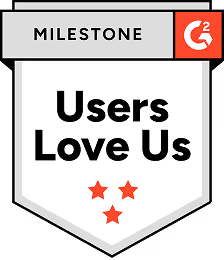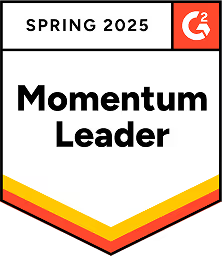3 Key Components of Any Comprehensive Sales Strategy

How you sell is as important as what you're selling. As new capabilities in technology and data management arise and models become stale, your strategy has to be able to adapt. And that's easier said than done. Starting from scratch isn't a desirable option and requires more bandwidth than you probably have.
Instead, incorporate these three components into your sales strategy to keep it tip-top and working for your sales team.
1. Always Be Testing
Take a note from the scientific method here; everything is a hypothesis until it's been tested. And tested again. And tested again.
Furthermore, like the scientific method, your tests must be scalable and repeatable. Once isn't enough.
You might have a feeling or some anecdotal evidence pointing your sales tactics in the right direction, kind of. But data doesn't lie. Testing gives you those jumping-off points you need, to know where your sales strategy is working for you and where it isn't.
If your sales strategy is not testable, or if it hasn't been tested, you're wasting both bandwidth and resources, without even knowing where from.
A/B testing is a popular and valuable way to do this. Test subject lines, landing pages, CTAs or whatever else is most relevant to your sales assets.
Sometimes a minor change can lead to closing the deal. Sometimes what you're already doing works best. Either way, you need to know.
But A/B testing shouldn't be the only tool in your testing toolkit. A/Z testing is also important. What’s the difference? It’s micro vs. macro. Let me explain.
- A/B testing is testing subject lines, opening email lines, calls to action or even different emails.
- A/Z testing is testing entirely different campaigns, sequences or channels.
For most, A/B testing is the only viable option due to the time it takes to come up with entirely different campaigns to test. With regie.ai, users can easily add A/Z testing to their toolbelt to test entire sequences. Regie.ai users can test radically different sales sequences because it only takes minutes to write them, dramatically reducing time to value.
Essentially, testing your sales processes respects the difference between planning and execution. It leverages the objectivity of metrics and data to correct those more granular details or to tailor the layout of your sales strategy as a whole.
Because there's always room for improvement. Even in the most high-functioning sales strategy. By testing, you’re not just making some room, you're clearing the way. And we guarantee it won't be all bad. You'll find out what's most solid too.
Sometimes the data humbles you; sometimes, it pats you on the back. Even if your tests feel like an F on your report card, at the very least, you've gathered information.
TLDR Test your sales strategy to:
- Garner insights and metrics
- Save bandwidth and resources in the long term
- Tailor your sales model to your team and product or service
2. Refresh and Repeat
You're not going to ignore the results of your testing. This is where the CTA comes in, so to speak. Your tests are telling you to do something. Often, refreshing your content is that something.
Let's say you learned that your omnichannel outbound approach is meeting your sales goals, but your inbounds need some work. Take a look at the mechanisms you already have in place to draw customers in.
Are you using custom videos in your emails? Yes, you should continue putting out more, but you can also work with what you already have. Refresh them by adding new features, re-scripting ones you’re seeing fall off in your video analytics, or by making a few personalized videos for your target accounts.
If testing reveals your outbounds are lacking, refresh the language and content of your campaigns. Maybe your subject lines aren't doing the heavy lifting they once were. Maybe your prospects are tired of reading, "Have a few minutes to meet?" Maybe your pain points and corresponding value propositions could use some refinement.
How often you update your email content or call scripts is somewhat of a personal decision, but we recommend at least quarterly, because what's relevant and in-style changes fast. Best practices for sales keep moving on, with or without you.
Testing should give you more insight, along with trends in graphic design and the onset of new technology. Just imagine a sales strategy that uses content from before the proliferation of the smartphone, or even from before the pandemic.
It wouldn’t make sense, and more importantly, your credibility would be left vulnerable. The point is, it's easier to trust someone who is up-to-date because it communicates diligence. And what else are sales reps dealing in, if not trust?
So if a new platform comes along tomorrow that makes LinkedIn obsolete, are you going to keep your content as is, or will you refresh it accordingly?
Remember that refreshing doesn't mean everything goes. It's simply an opportunity to massage the content already in place and keep up with the ever-evolving nature of language and technology.
TLDR Refresh your sales strategy by:
- Reworking your pre-existing public content
- Updating your outbound sales content
- Adjusting your sales pitch
3. Persona-Targeted Strategy
A persona-targeted sales strategy is a must in today’s sales climate. To define it, we'd say that within any target market, there are archetypes. A persona-targeted strategy builds out those archetypes and lends itself to each of them.
For example, let's say you're in medical sales. A segment of your target audience might be nursing home administrators. Within that same target audience may be directors of nursing. A persona-targeted strategy accounts for the differences in nuance it takes to approach a person in either role by accounting for the background, demographics, identifiers and goals of the people in them.
When a rep accounts for these variables, their tonality is more appropriate for the prospect. Some prospects will expect interactions that include personal touches, while others will prefer reps to reach their point as quickly as possible. Persona-targeted approaches give sales teams predictors of what that expectation might be, ultimately improving sales.
Another significant bonus of a persona-targeted strategy is that the proper pain points are addressed. It's not enough to vaguely touch on the commonly accepted pain points of an industry. Your prospect's pain points should be customized to their defining characteristics, like their role, goals, and even the size of their operation. Pain equals value, so take the time to get the pain points right.
Ideally, a persona-targeted strategy also eliminates the communication bias we all hold. Whenever we communicate, we are working off the assumption that everyone receives information the way we do, which is far from accurate. It's only human, but when we’re trying to appeal to various people in a variety of fields and positions, our biases hold us back.
Tip: Regie.ai scrubs content for bias and uses DISC assessment to write content based on how a prospect receives information.
By not accounting for these differences, a rep may be sending the same messages to every type of qualified lead, regardless of tonality, pain points and bias.
How we communicate with a prospect is as important as our product/service and our sales strategy as a whole. And if being of value to someone means understanding them, then having a more defined sense of who they are and what they expect is necessary. A persona-targeted strategy helps your initial touch to be more impactful and makes future engagement easier to navigate.
Put simply; it's less of a challenge to meet someone where they're at when we have a better idea of who they are.
TLDR Persona targeted approaches improve:
- Your tonality
- Pain point accuracy
- Your value
Your sales strategy shouldn't be a pesky detail in your periphery; it should be front and center and working for you. If it's comprehensive, it will include components that feed one another.
Aim to reach a point where what's unnecessary has been trimmed and what is necessary has been supplemented, then get behind the idea that it will constantly evolve. It's not one and done, but there are ways to make testing, refreshing and persona development easier.
FAQs
Read more posts
View all BlogsNeed more help?
If you still have questions, make sure to check out our Help Center: there, you'll find all the tips & advice you'll need to get your team up & running with Regie.ai.









